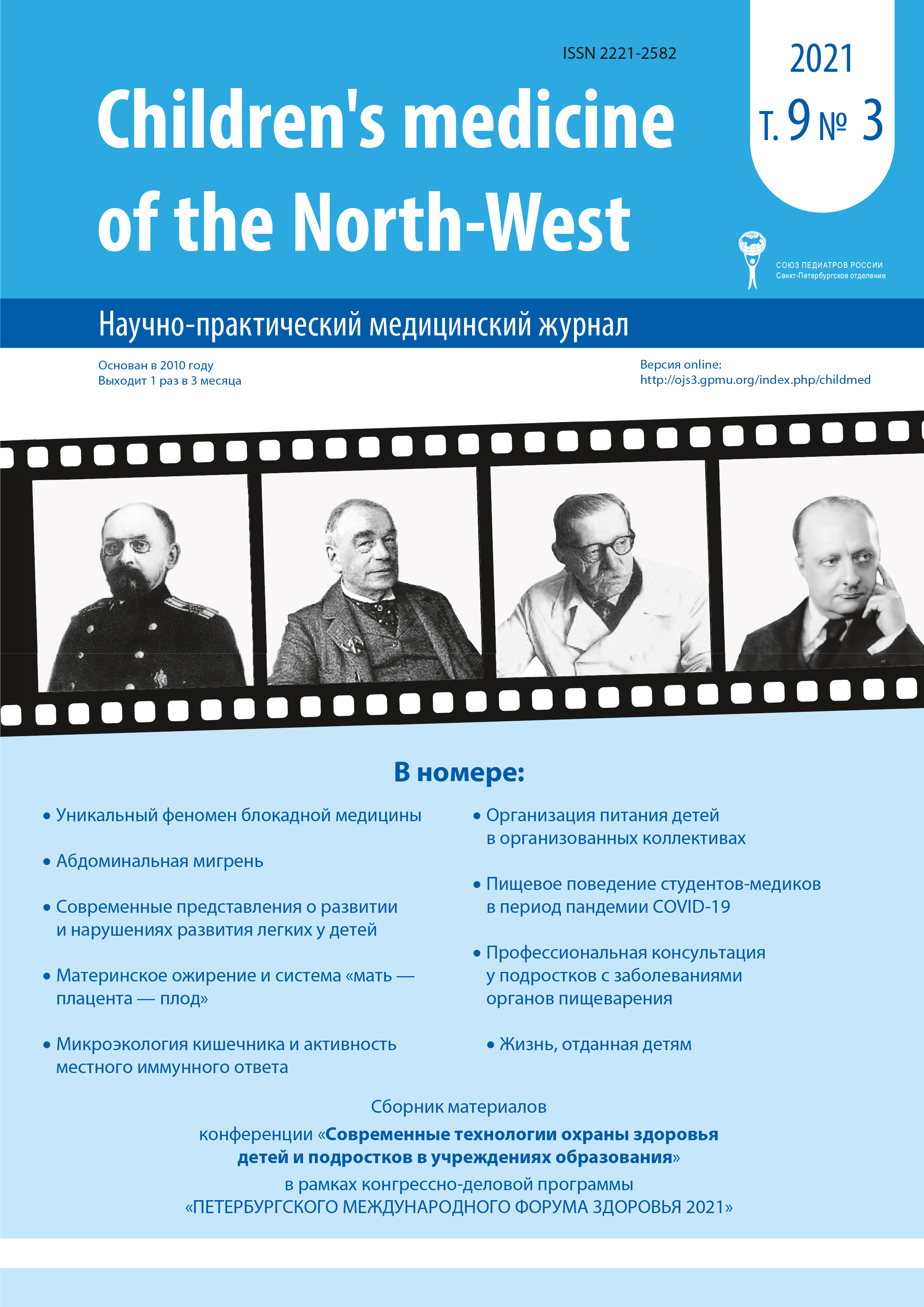THE STATE OF INTESTINAL MICROECOLOGY AND THE ACTIVITY OF THE LOCAL IMMUNE RESPONSE IN THE AGE ASPECT
Abstract
General information. Numerous experimental and clinical studies carried out in our country and abroad indicate that the postnatal formation of the intestinal microbiota, and, consequently, the immune response, is greatly influenced by the intake of antibacterial drugs, dietary characteristics and living conditions. The purpose of our research work was to study the state of intestinal microbiocenosis and mucosal immune response in children with a common social status and living in the same conditions. Methods. The study included 42 respondents who, taking into account the goal, were divided into two groups: the first (n=19) - children aged 7 months, 16 days to 1 year, 1 month, 15 days (average age 10.4±3.75 months), the second (n=23) - children aged 1 year, 2 months, 16 days to 2 years, 6 months, 16 days (average age 20.2±6.75 months). The groups were comparable in perinatal anamnesis, gender differences and practically in the diet. Taking into account age, the differences were in the frequency of episodes of acute infectious diseases, the prescription of antibacterial drugs, the consistency and volume of meals. The study of the composition of the luminal microbiota of the large intestine was carried out using a standard microbiological method, typing of bifidobacteria and lactobacilli species was carried out by PCR using the DNA - sorb-B-50 kit. The state of the local intestinal immune response was assessed by the level of secretory IgA (sIgA) in coprofiltrates using enzyme linked immunosorbent assay (ELISA). Results. It was found that in children of different age groups, the microbiota of the digestive tract has a number of interdependent characteristics, namely, a similar spectrum of representatives of the commensal microbiota (Staphylococcus spp., Candida spp., Clostridium, etc.) and against this background, as they grow older, there is a decrease in the proportion of normobiota (bifidobacteria and lactobacilli) with an expansion of its species composition. The activity of the intestinal mucosal response is determined by age and the severity of dysbiosis. Conclusion. Of course, the nature of nutrition and living conditions determine the quantitative and qualitative composition of the microbiome, but the process of growing up, especially in the first two or three years of life, accompanied by the layering of infectious diseases and, in some cases, taking antibacterial drugs, can be considered as a key factor at the stage of creating an adult enterotype.



